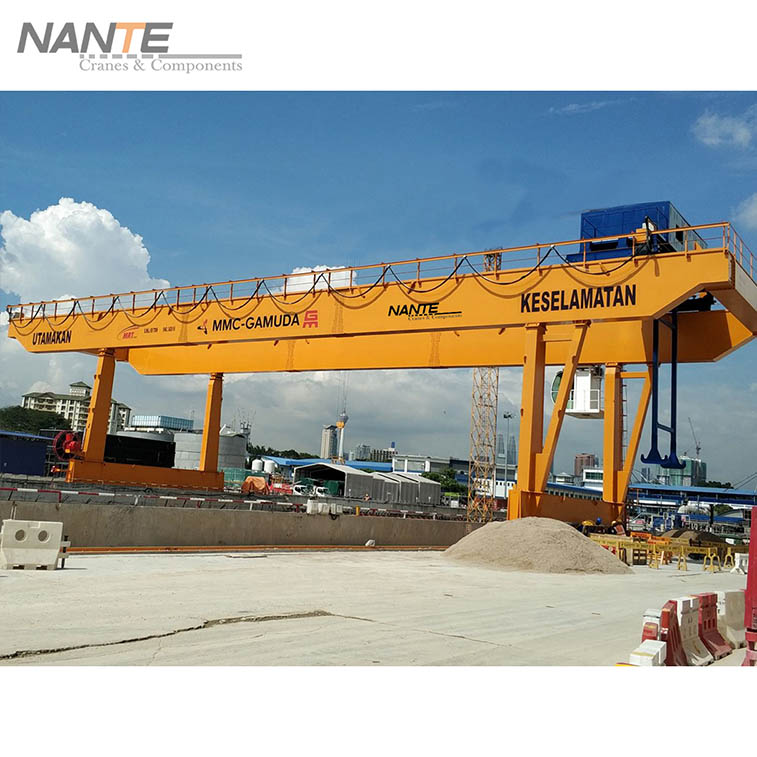How a Gantry Crane Can Optimize Your Workplace Efficiency
Date: 2024-07-11 Share:
A gantry crane is an overhead lifting machine that uses a hoist mounted on a horizontal beam, which is supported by two or more legs with wheels. These cranes are crucial in various industrial applications for moving and lifting heavy loads efficiently. When it comes to gantry cranes, there are several types to consider, primarily categorized into fixed vs. adjustable and full vs. semi-gantry cranes.
Fixed vs. Adjustable Gantry Cranes
Fixed gantry cranes are designed with a permanent height and width, making them suitable for repetitive tasks in a consistent workspace environment. These cranes provide stability and can handle substantial weights due to their robust construction. On the other hand, adjustable gantry cranes offer flexibility, allowing the height and width to be modified according to the specific needs of different tasks or changing worksite conditions. This adaptability makes them extremely useful in diverse project scenarios.
Full vs. Semi-Gantry Cranes
Full gantry cranes consist of two supporting legs that facilitate free movement across the entire designated space, providing maximum coverage for larger operations. Semi-gantry cranes, however, feature only one leg, with the other side supported by a wall or building structure. This design is advantageous when space is a constraint or when operations are centralized along a fixed path.
Common Uses and Industries
Gantry cranes are indispensable in various industries due to their versatile capabilities. They streamline operations, enhance productivity, and maintain workplace safety.
Construction and Infrastructure Projects
In the construction industry, gantry cranes are essential for lifting and moving heavy materials such as steel beams, concrete slabs, and large construction components. Their capacity to handle weighty loads efficiently reduces the time and labor required, ensuring project timelines are met with precision.
Manufacturing and Assembly Lines
In manufacturing and assembly lines, gantry cranes play a critical role in the handling of raw materials and finished products. They facilitate the smooth transition of components across different stages of production, ensuring that the workflow remains uninterrupted and efficient. This seamless integration impacts overall manufacturing output positively.
As one of the famous brands in the production of winches, cranes and crane parts, Nante Crane is dedicated to research and development of lifting and material handling technologies. We adopt innovative ideas and design in developing new products and services. Backed up by a wealth of industrial experience, we can provide customers with high quality lifting equipment and components.
Key Advantages of Using Gantry Cranes
Versatility in Applications
The implementation of a gantry crane in your workplace can significantly enhance operational efficiency due to its versatile applications. From construction sites to manufacturing processes, gantry cranes can adapt to various environments and project needs.
Adaptability to Different Projects and Worksites
A key strength of gantry cranes is their ability to adapt to different projects and worksites seamlessly. Whether you are moving large construction materials on a busy site or handling delicate equipment in a manufacturing facility, a gantry crane can be customized to meet specific requirements, making it a valuable asset across diverse industries.
Ease of Installation and Mobility
Installing and moving gantry cranes is straightforward, making them a practical choice for businesses of varying sizes. The quick setup process ensures minimal disruption, allowing teams to focus on their primary tasks without significant downtime.
Quick Setup Process
One of the notable advantages of gantry cranes is their swift assembly and disassembly. This quick setup process is not only time-efficient but also cost-effective, as it allows businesses to deploy the crane as needed without extensive preparation or specialized tools. This convenience can be particularly beneficial in dynamic work environments where project requirements frequently change.
Simplified Transportation and Relocation
Gantry cranes offer simplified transportation and relocation due to their mobile design. Many models are equipped with wheels, enabling easy movement from one part of the worksite to another. This portability ensures that the crane can be re-positioned to different locations as needed, enhancing workplace efficiency through flexible operation.
Cost-Effectiveness
Another significant advantage of utilizing gantry cranes in your operations is cost-effectiveness. Investing in a gantry crane can lead to substantial savings in both labor and maintenance.
Reduction in Labor Costs
Gantry cranes substantially reduce the need for manual labor in heavy lifting and material transport tasks. By automating these processes, businesses can lower their labor costs. Workers can be redirected to focus on other essential tasks, thereby increasing overall productivity and operational efficiency.
Lower Maintenance Costs Compared to Other Cranes
Compared to other crane types, gantry cranes generally entail lower maintenance costs. Their construction is often simpler, with fewer moving parts, which translates to less wear and tear over time. Regular, straightforward maintenance routines help ensure long-term reliability without incurring significant expenses.
Enhanced Safety Features
Safety is a paramount consideration in any workplace, and gantry cranes are designed with built-in safety mechanisms that minimize the risk of accidents.
Built-in Safety Mechanisms
Gantry cranes are equipped with various safety features, such as overload protection systems, emergency stop buttons, and anti-collision devices. These mechanisms work together to prevent accidents and ensure the safe handling of loads.
Minimization of Workplace Accidents
By taking over the heavy lifting and precise movement of materials, gantry cranes help minimize workplace accidents associated with manual handling. This emphasis on safety fosters a more secure environment, promoting better morale and productivity among workers.
As one of the famous winch production and manufacturing brands, Nante Crane is committed to helping our clients reduce investment cost, improve production efficiency, and economize energy consumption. Nante Crane’s main products include industrial cranes, offshore cranes, Launching Crane, electric hoists, crane travel unit, mobile power supply system etc. with reliable and excellent performance.
Comparing Gantry Cranes to Other Types of Cranes
Differences with Overhead Cranes
While both gantry and overhead cranes serve similar purposes, there are key differences in their structural design and installation requirements.
Structural Design and Installation Requirements
Overhead cranes are often installed within the building structure, requiring significant modifications to the facility, which can impact structural integrity and incur higher installation costs. In contrast, gantry cranes do not require such permanent alterations, making them more versatile and easier to install in various settings.
Benefits over Jib Cranes
Gantry cranes also present distinct advantages over jib cranes, particularly in range of motion and load capacity.
Range of Motion and Load Capacity Comparisons
Gantry cranes generally offer a broader range of motion and higher load capacity compared to jib cranes. Jib cranes are usually limited by their fixed arm, which can restrict movement. Gantry cranes, with their mobile design and extensive coverage area, can handle larger loads and operate over wider spaces, enhancing overall efficiency.
In addition to producing and manufacturing winches, Nante Crane has achieved breakthroughs in core technology and has the ability to manufacture core components, which are widely used in more than 20 professional fields such as advanced manufacturing, metal processing, aerospace, etc. Nante Crane is committed to the research and development and manufacturing of handling machinery and technology.
Future Trends in Gantry Crane Technology
Innovations in Automation
The future of gantry crane technology is likely to be shaped by advancements in automation. Automated gantry cranes can operate with minimal human intervention, using sophisticated software to enhance precision, efficiency, and safety. These innovations promise to further reduce operational costs and improve productivity.
Advancements in Material Engineering
Material engineering advancements will also play a vital role in the evolution of gantry cranes. The development of stronger, lighter materials can lead to more durable and efficient crane designs. These improvements not only enhance the performance of gantry cranes but also extend their lifespan, making them a more sustainable option for businesses.
By understanding these aspects of gantry cranes, businesses can make informed decisions about integrating these powerful machines into their operations, ultimately optimizing workplace efficiency and achieving long-term success.




